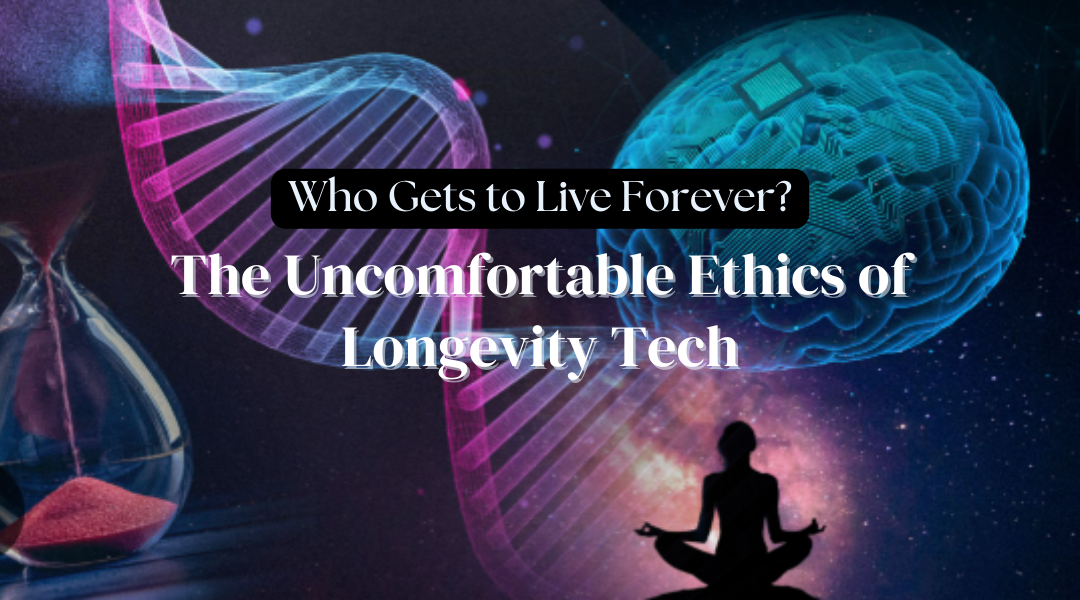Let’s be honest—We all want to live longer, healthier lives. But as billionaires pour money into anti-aging startups and Silicon Valley races to “disrupt death,” a thornier question emerges: Who actually gets to benefit from these breakthroughs? The promise of extended lifespans isn’t just a scientific challenge—it’s a moral minefield.
The Access Gap: A Tale of Two Aging Curves
Picture two 65-year-olds: One is a tech executive getting monthly infusions of senolytic drugs to purge aging cells. The other is a grocery clerk rationing insulin while waiting six months for a knee replacement. This isn’t dystopian fiction—it’s where we’re headed without intervention.
The hard truths:
- The 1% Problem: Cryotherapy chambers and gene therapies already function as luxury goods. A single round of anti-aging stem cell therapy can cost $25,000—more than many Americans make in six months.
- Global Haves and Have-Nots: While Dubai opens longevity clinics, rural communities lack basic geriatric care. The average lifespan in Monaco is 89; in Chad, it’s 54.
- The Data Divide: AI-driven longevity apps need your health metrics to work. What happens when only those with premium wearables get early disease warnings?
Society’s Wrenching Adjustments
If 100 becomes the new 80, everything changes—and not all for the better:
- Pensions vs. Perpetual Paychecks: Japan’s “80-year-old interns” might become the norm. Do we really want octogenarians delivering Amazon packages to afford rent?
- The Inheritance Logjam: With heirs waiting decades longer to inherit, wealth inequality could fossilize. Imagine a 70-year-old millennial still waiting for mom’s condo.
- The Caregiving Crisis: More centenarians mean more families torn between careers and decades of elder care.
Playing God: When Science Outpaces Wisdom
There’s a quiet unease among bioethicists: Are we curing aging—or just creating new ways to suffer?
- The Botox Paradox: We’ve normalized fighting wrinkles, but is erasing mortality itself a step too far? Religious groups and philosophers argue aging has meaning.
- The Healthspan Trap: Adding 30 years of dementia isn’t progress. Yet most funding goes to lifespan extension, not quality-of-life research.
- Unintended Consequences: Lab-engineered supercentenarians might need perpetual immunosuppressants. What happens when the next pandemic hits?
Real-World Reckonings
Case Study: Iceland’s Genetic Edge
- With 60% of citizens enrolled in deCODE Genetics’ database, Icelanders get hyper-personalized medicine. But when a company monetizes that data, who profits? The people—or the shareholders?
The Swiss Model
- Some Swiss cantons now cover cryopreservation under health insurance. Is this progressive—or a disturbing precedent where the state prioritizes the frozen wealthy over living patients?
A Path Forward That Doesn’t Leave Most Behind
- The Medicare Advantage Playbook
Mandate that private longevity clinics allocate 20% of slots to Medicaid patients. After all, taxpayers funded the foundational research. - The Cuba Strategy
When U.S. embargoes blocked medical imports, Cuba trained armies of doctors and prioritized preventative care. Their life expectancy now rivals America’s at a fraction of the cost. - The “Vaccine” Approach
Treat breakthrough longevity drugs like essential medicines. Pool global demand to negotiate bulk pricing, as done with HIV treatments.
The Ultimate Question: Why Do We Want This?
Before we chase immortality, we need to ask:
- Are we extending life because we value human potential—or because Silicon Valley can’t conceive of an endpoint to growth?
- Will extra decades deepen wisdom and relationships, or just lengthen the rat race?
The most ethical longevity tech won’t come from a lab. It’ll come from answering: What makes those extra years worth living? And ensuring the answer isn’t just “Because we could.”
Final Thought
The goal shouldn’t be helping a few rich people cheat death. It should be ensuring no 80-year-old has to choose between groceries and heart medicine. Now that’s a future worth engineering.
